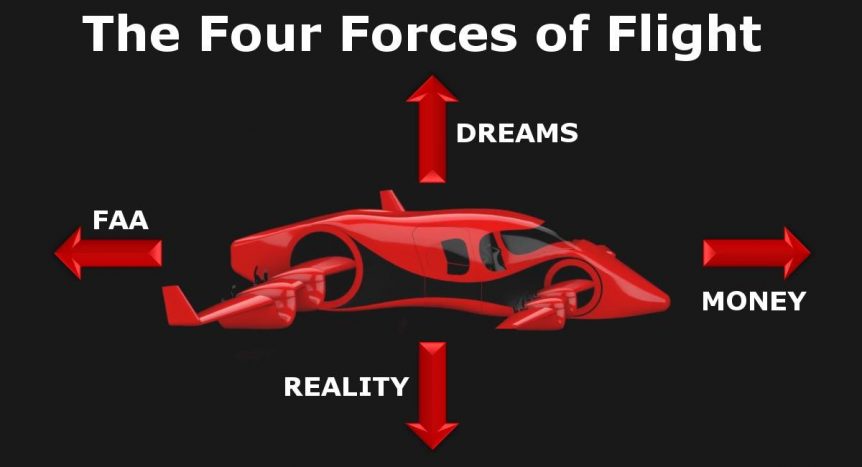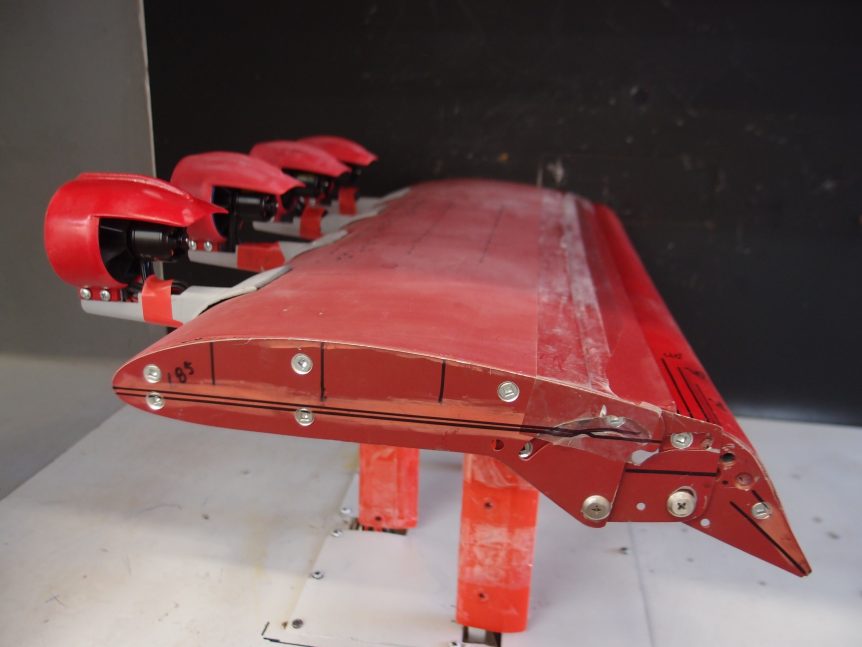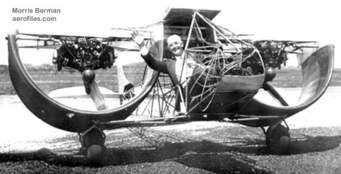With 2020 lurching into life in some turbulence, HopFlyt promises a smooth, above-the-fray experience. A look back at an innovative aircraft designer, the new variant applies electric power and new structural techniques unknown when Willard Custer had his inspiration. HopFlyt is a modern interpretation of that vision, with distributed electric propulsion, 3D-printed components, and simplified control systems. Willard was a far-sighted soul in the 1940’s, when aircraft were either all wood, all sheet metal, or mixed structures of wood, chromoly tubing and fabric. The composites that freed designers for swoopier things were a few decades away. Willard Custer’s Big Idea Reputedly a descendant of George Armstrong Custer, Willard Custer envisioned a propeller in a semi-circular channel that might produce lift as well as thrust. This blog channeled that history in an earlier article on HopFlyt in 2017. While you can see real-life footage of the original channel wing concept in that entry, we turn to Tom Stanton, who built a …
The I.D.E.A.L. Becomes Real with JabirWatt
Dr. David Ullman taught mechanical engineering and project management for over three decades, and his books on the mechanical design process are consistently sought after. His current project, JabirWatt, is hangared at his home in Independence, Oregon, and combines the internal combustion propulsion of its Jabiru engine with the lift-enhancing addition of four electric ducted fan motors on the wings. A project partner, Vince Homer, lives nearby on the airport. Both have hangars filled with things of genius, including the well-instrumented wind tunnel on which David tests his ideas (or I.D.E.A.L – Integrated Distributed Electric-Augmented Lift). Slightly different from the approach promised in his presentation at last year’s Sustainable Aviation Symposium, the modified Jabiru sacrifices its rear seat for a large battery box to power the (now) four electric ducted fans (EDFs) atop the inner part of the wing. He’s since presented at this year’s CAFE Foundation symposium and at AirVenture 2019. Different From a Maxwell Your editor has joked …
HopFlyt Channels the Custer Channel Wing
HopFlyt is an enthusiastic young organization devoted to renewing the Custer Channel Wing, a lost remnant of attempts to create extremely short takeoff and landing (STOL) airplanes starting over 70 years ago. Their web site explains their primary goal, which includes adding electrically-powered vertical takeoffs and landings to the channel wing’s repertoire. “HopFlyt is an aviation technology startup company [whose] main priority is to develop technology and ultimately build a sustainable electric Vertical Takeoff & Landing (eVTOL) aircraft. The goal of this aircraft is to help you beat the jam of traffic and reduce pollution in major urban centers around the world. We want to change your 2 hours of traffic into a short 20 minutes of flying.” Willard Custer’s Frustrated Search for High Lift Willard Custer designed several approaches to using his unique ducts to channel air around the rotating propeller. These are covered in at least 27 patents granted to him between 1929 and 1974. He built and …
Pneumatically Pumped Up
Robert J. Englar is Principal Research Engineer at the Georgia Institute of Technology’s Georgia Tech Research Institute in the Aerospace & Acoustics Technology Branch. Responsible for research project direction and development of advanced technologies in aerodynamics, he added a different type of discipline to those presented at the fifth Annual Electric Aircraft Symposium last April in Santa Rosa, California. His research combines attempts to achieve low noise, high lift and short takeoff and landing (STOL) capabilities while applying pneumatic power to the equation. Not to be confused with inflatable rafts, pneumatic, in this case, refers to the careful routing of high-pressure airstreams over very different airfoil and high-lift device surfaces, and has led to measured coefficients of lift in the 8.5 to 9.0 range. By comparison, a conventional STOL craft may generate a CL of 3.3 (Zenith Air 801) and the Custer Channel Wing claimed, with its propeller blast channeled through a semi-circular wing (hence the name), an infinite CL. …



